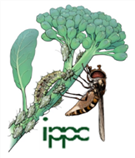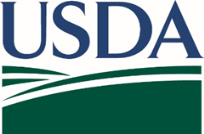The Dirt | Integrated Biological Pest Management

Integrated biological pest management (IBPM) is “an ecological, whole farm systems approach” that involves the intentional integration into the farm landscape designed or natural habitats, plantings, and/or rotations, to attract and sustain the beneficial insects that manage crop pests.
Also called conservation biocontrol, this method focuses on increasing the on-farm occurrence and diversity of beneficial insects that are already present in the area…by providing food, shelter, and other habitat components. For more information see Farming with Native Beneficial Insects: Ecological Pest Control Solutions, Xerces Society Guide.
According to Gwendolyn Ellen (Oregon State University Integrated Plant Protection Center), “The IBPM process begins with: correct identification of pest, environmental, and disease damage on the crops; understanding the biology and ecology of both beneficial insects and the crop pests; recognizing existing on-farm resources for beneficial insects and how they can be enhanced; and defining resource gaps to be addressed.”
2017 was an exceptional year of Integrated Biological Pest Management (IBPM) education thanks to USDA Risk Management Education Partnerships Program funding and the leadership of Gwendolyn Ellen. The IBPM education project depended on contributions from many valuable partners: SWCD staff and Extension agents; farmers, entomologists, wildlife biologists, and botanists; state and federal agency staff; college and K-12 instructors, and enthusiastic volunteers!
IBPM Education
The partners delivered 24 IBPM educational courses and field days based on presentations and hands-on activities developed by Gwendolyn Ellen over decades of IBPM work with farmers. Cooperatively, we reached 561 contacts from 20 Oregon and 4 Washington counties. All told, 104 farmers and experts delivered presentations on: insect identification, insectary design and management, and additional topics such as birds of prey and financial and technical resources available for IBPM implementation.
Project partner, Lisa Kilders, Clackamas SWCD, collaborated with Chelsea White-Brainard, East Multnomah SWCD, to create a handy field chart titled Crop Pests and Their Important Natural Enemies.
The project’s success was built on various levels of involvement. Project partners delivered workshops with abundant help from professional experts who bolstered the delivery and content of IBPM materials. Experienced and knowledgeable farmers freely shared their expertise and welcomed participants to their land. The event participants were enthusiastic about the topics and appreciated the opportunities to: learn about beneficial insects and pests, work in small groups to design habitats, interact with peers and experts, and receive resources, including insect collection kits, books, and informative handouts. The participants’ feedback confirmed their appreciation for revered farmer-to-farmer mentoring.
IBPM Feedback
Event questionnaires were completed by 46% of attendees (257). Through that process 127 farmers reported that they collectively manage 17,335 acres and grow over 50 crops, plus livestock, timber, Christmas trees, and nursery stock. Toward the end of the project, of the 25 participants who completed an online survey, 84% indicated that they have already made IBPM changes in their farm or land management practices or advice to farmers.
“Thank you, all. Yet, I should be thanking you for striking up this dialogue with all land owners to explore ways we can all bring harmony between our endeavors and those of the Natural World. This is a very important collaboration that once was taken for granted and now we must re-learn.” Wasco County landowner
IBPM Funders and Partners






Resources and References
Introduction to Farmscaping: Practices and Habitat Establishment, a PowerPoint presentation by Gwendolyn Ellen

